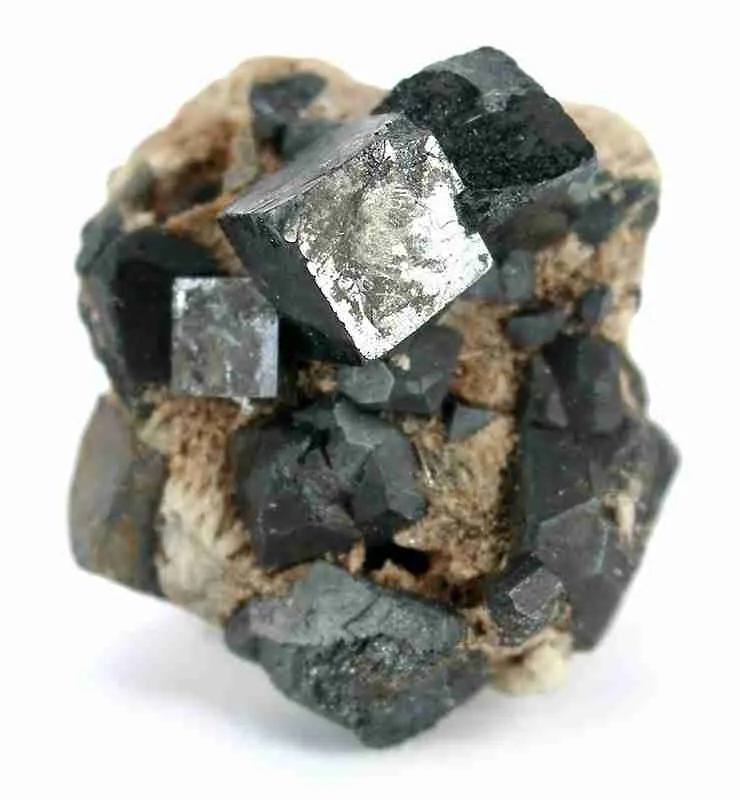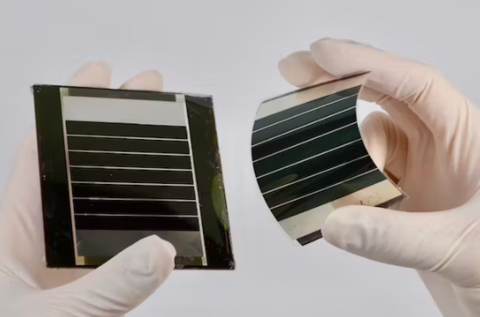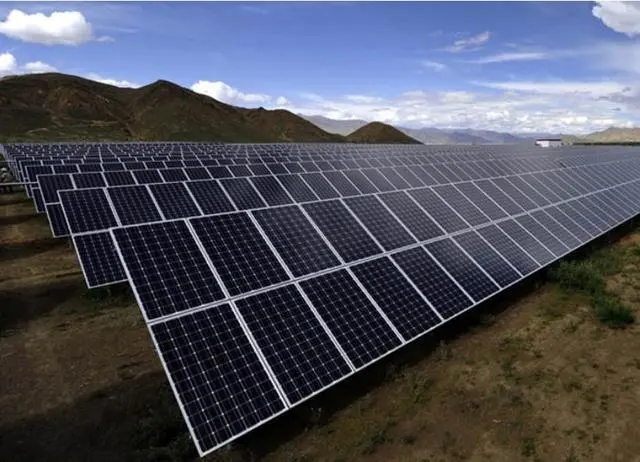오늘날의 21세기에는, 전 세계적으로 재생에너지 수요가 증가함에 따라, solar energy has become one of the most widely accepted methods of energy production. It uses the radiant energy emitted by the sun, commonly known as solar rays, and is generally used to generate electricity or provide energy for water heaters.
태양 전지, 반면에, directly convert solar radiation into electrical energy through the photovoltaic effect. Within billions of years, 태양 에너지, as a green, 깨끗한, inexhaustible renewable energy, is becoming an important driving force in the global energy field.
비슷하게, perovskite solar cells are a new type of solar collector. Research shows that they are composed of different materials, are more energy efficient, and are a viable alternative to the more commonly used silicon solar cells. 이 기사에서는, we will let you know about perovskite solar cells and give you an in-depth understanding and understanding of perovskite!

What is Perovskite?
The name perovskitecomes from mineralogist Lev Perovski and is a material called calcium titanium oxide. Using minerals creates different compounds; one important ingredient contains methylammonium, lead, iodine and chlorine, which absorbs a wider range of sunlight than silicon. This material is used in more than 80% of solar cells on the market. Perovskites have properties such as superconductivity and magnetoresistance. These easy-to-synthesize materials are considered the future of solar cells because perovskites cost is very low and produce efficient photovoltaic power.
Solar panel perovskite are one of the most widely used areas. Perovskites in solar cells use the photoelectric conversion properties of perovskite materials to convert sunlight into electrical energy. Because perovskite materials have high light absorption rates and high electron transmission rates, perovskite solar have advantages in both efficiency and cost and are one of the current research hotspots.

What is a Perovskite Solar Cells?
new perovskite solar cell is a solar cell containing a perovskite structural compound as a photoelectric conversion layer. This kind of battery uses the photoelectric conversion properties of perovskite materials to convert sunlight into electrical energy. Its structure usually includes a light absorption layer, charge transport layer and electrode layer.
Perovskite materials are cheap to produce and relatively simple to fabricate. Perovskites have inherent properties such as broad absorption spectra, fast charge separation, long electron and hole transport distances, and long carrier separation lifetimes, making them a very promising solid-state solar cell material.
There is no doubt that perovskite solar cells are a rising star in the field of photovoltaics. They are causing a stir in the solar industry because of their ability to absorb nearly all visible wavelengths of light, achieve superior power conversion efficiencies of over 20% in the laboratory, and are relatively easy to fabricate. 최근에는, perovskite solar cells have made significant progress, with efficiency increasing rapidly. Starting from around 3% reported in 2009, their efficiency has soared to over 25% 오늘.

The Emergence of Perovskite Solar Panels
It’s an interesting world of perovskite solar panels. Named after the mineral perovskite due to its unique crystal structure, perovskite panels are a fascinating innovation. One interesting aspect of perovskite solar panels is that their discovery was an accident. Researchers stumble upon them while experimenting with different materials, which is like discovering a hidden treasure while digging for something completely different!
Perovskite solar panels are a game-changer primarily because of their superior efficiency in converting sunlight into electricity. Unlike traditional silicon-based solar panels, which have seen increasing efficiency over the years, perovskite solar cells have achieved a quantum leap. They can be incorporated into a variety of applications, including flexible and translucent panels. These types of flexible solar panels open the door to innovative uses, such as solar integrated Windows, building integrated PV, and solar clothing.

Comparing Perovskite to Traditional Silicon-based Solar Panels
Perovskite solar panels have some significant differences and advantages over traditional silicon-based solar panels, some of which we have listed below:
| 비교 | Perovskite solar panels | Traditional silicon-based solar panels |
| Preparation cost and production process | The perovskite solar panels price is relatively low, the production process is relatively simple, and simple processes such as printing and spraying can be used. | The preparation cost is high, the production process is complex, and it requires high-temperature treatment and precise processing technology. |
| 능률 | perovskite solar panel efficiency are highly and have high photoelectric conversion efficiency. They are currently approaching or even surpassing the efficiency level of traditional silicon-based solar panels. | Efficiency is relatively stable but generally lower than perovskite solar panels. |
| 유연성 | Perovskite materials have flexible properties and can be prepared into flexible perovskite solar panels, suitable for applications on curved, curved or irregular surfaces. | Silicon-based materials are usually brittle, making it difficult to prepare flexible panels. |
| 환경 영향 | The preparation process of perovskite materials is relatively environmentally friendly and can achieve sustainable use of resources. | The preparation process of silicon-based materials may cause certain environmental pollution, and there are certain restrictions on the mining and utilization of silicon resources. |
| 안정 | 현재, perovskite materials still have challenges in terms of long-term stability, especially in environments such as high temperature and humidity, which are prone to degradation. | Silicon-based materials have relatively stable performance and high stability in adverse environments. |
Applications of Perovskite Solar Cells
Perovskite solar cells have broad application prospects in the energy field, including but not limited to rooftop solar power systems, solar power stations, portable solar chargers, remote area power supply, marine and aviation fields, 등. The application range of perovskite solar cells covers various fields, and its high efficiency, reliability and environmentally friendly characteristics make it an important part of the future development of clean energy.
Perovskite solar cell technology will become more and more outstanding. Its high efficiency and versatility are not just another innovation in renewable energy. Integrating these batteries into a variety of infrastructure and applications makes it possible to create more sustainable and efficient energy systems.
What Are The Advantages of Perovskite Solar Cells?
Perovskites exhibit unique defect tolerance, allowing them to operate efficiently even in the presence of impurities and defects. Perovskites, 반면에, are much easier and more flexible to produce. The structure of perovskite cells gives them high carrier mobility and long diffusion lengths. This allows photogenerated electrons to travel long distances without losing energy.
요컨대, the goal of perovskite solar is to increase the efficiency and reduce the cost of solar energy. Perovskite photovoltaics do hold promise for high efficiencies, low potential materials, and reduced processing costs. 게다가, they offer flexibility, translucency, customizable form factors, 가벼운 무게, 그리고 더.
The Future of Solar Energy And Perovskite Solar Cells
Perovskite solar represent a photovoltaic technology with great potential for integration into solar panels. 하지만, perovskite solar cells also present certain obstacles, particularly in terms of the long-term stability and elasticity of the perovskite cells.
Continued research into solar panel perovskite is ongoing, and they are expected to have a significant impact on the future of solar energy. Perovskites, once refined, could be the future, or a stepping stone to another as-yet-unexploited wonder material.
결론
As the world races to achieve net zero emissions and we see the use of fossil fuels continue to decline, the need for the most efficient renewable energy alternatives will only increase.
전반적인, the future of perovskite solar technology is worth looking forward to, but since it is not yet widespread, it will be a long wait. 그러므로, the best choice at present is N type, which is the most cost-effective. If you want to choose, please choose GYCX Solar, 우리는 효율적이고 안정적인 태양광 솔루션을 제공하기 위해 최선을 다하고 있습니다.. Let’s work together towards a greener and more sustainable tomorrow. Contact us to create a clean energy future!
자주하는 질문
Is Pervovskite the future of solar panels?
Most likely, 예, until its stability improves.
Can perovskites replace traditional silicon-based solar panels?
This is unlikely, and it will take years for perovskites to become widely available and proven before an answer can be found.
Why perovskite solar cells are not commonly used?
The main reason is that these panels are less stable than PV solar panels. 또한, they deliver less output when they are covered with dust, 수분, or light.
